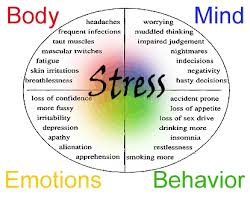Occupational Stress in Organizations Effects Order Instructions: Here below are the questions for the writer to take into considerations when reviewing the article.

It is important that the writer also cite the article and use proper APA 6th edition in this paper. The writer must clearly respond to all the questions posed in the order below. they are 5 key points here to respond to and the writer must demonstrate mastery of the questions and a Yes and NO respond is not welcome, you must clearly support your points with facts and relevant studies.
This week you will assess several studies with an eye toward the relationship between the hypothesis, data collection methods, and statistical analysis employed. As you read each article, consider whether these aspects are logically integrated or related.
In reviewing the article that you chose, focus your analysis on each of the following guiding questions. You should address each set of questions in a short paragraph. Be sure to refer directly to the article where appropriate.
• Briefly describe the type of statistical analysis. What does it measure, and what are its assumptions? Do the assumptions apply to the data in the article?
• Was there a statistically significant result? Were results mixed? Explain the findings.
• Did the authors present hypotheses? Were they plainly stated or inferred? Did the analysis support the hypotheses?
• How else might this study have been conducted? For example, could a different population have been studied? Could the population size have been different? Would a different type of analysis been appropriate?
• Are the results valid and reliable? Are they generalizable? What would need to be done in order to generalize the results to other contexts, populations, or settings?
Occupational Stress in Organizations Effects Sample Answer
Occupational stress in organizations
The type of statistical analysis is a qualitative descriptive analysis of the data. The study assessed the causes, symptoms, and the effects and the appropriate interventions by occupational stress. The data was analyzed by means of the statistical package for social studies (SPSS). The interventions were measured using the Likerts scales of 1to 5. The scores 1 represented strongly disagree, score 2 represented disagree, 3 for the undecided, 4 for agree and 5 for strongly agree. The combinations were used to facilitate data analysis. 125 questionnaires were randomly distributed among the sampled employees and 75 of them were duly answered giving a response rate of 60%.
The respondent’s ranks on agreement on the causes of were recorded in according to Likert scale. A variety of variables was used to analyze the causes of occupational stress. The different variables of the study were assessed in accordance to the percentage of the individuals in each rank. The results presented different results depending on the response of employees. The results recorded were different depending on the variable. For instance, the results for the variable of inadequate salary, 73% percentage agreed while in the variable of 53% agreed on the variable of lack of superior interest. The general findings of the study were that occupational stress affects employees in many ways. Also, the findings show that occupational stress is a major course of employee turnover. Several suggestions have been made to act as interventions strategies by the managers to control and reduce stress in organizations.
The hypotheses of the study were clearly stated. The clearly outlined regarding the causes of occupational stress, the signs of stress and the interventions that can be applied to effectively manage stress by managers in an organization. The hypothesis was that organizational stress affects employees in many ways. The causes of the organizational stress were recorded in questionnaires, and the employees were supposed to give response depending on whether they strongly agree, agree, are undecided, disagree or strongly disagree with the hypothesis (Proulx, 2011).
The study utilized a qualitative descriptive analysis. Alternatively, the study could have taken a quantitative analysis perspective to analyze the aspects of the causes, signs and the interventions made on the management of occupational stress. The use of the statistical analysis provides more accurate and definite results. For instance, it is difficult to assess how strongly the individuals in the sample agree or disagree with the hypothesis. A mathematical, statistical method could have been used to assess the relationship between the data sets obtained. In the mathematical analysis, the hypothesis stated is answered with either the answer yes or no which makes it more accurate. Also, with this method, it is possible to either accept the hypothesis or reject it depending on the findings. However, the population from which the sample was obtained was appropriate for the study. Larger sample size has more dispersion (Berger, 2013). Therefore to make the make the results more accurate a larger sample size should have been used.
According to the study, the results obtained are generalized used to summarize the sample data, since the analysis employed was descriptive. The results are presented in the form of percentages basing on the responses of the individuals. To make the results more reliable a mathematical aspect should have been employed. The numerical descriptors such as mean and standard deviation should be involved in draw more meaningful conclusions about the particular population under study (Proulx, 2011).
Occupational Stress in Organizations Effects References
Berger, J. O. (2013). Statistical decision theory and Bayesian analysis. Springer Science & Business Media
Ongori, H., & Agolla, J. (2012).occupational stress in Organisations and its effects on the organizational performance. IJLD, 2(1). http://dx.doi.org/10.5296/ijld.v2i1.1473
Proulx, T. (2011). Modal Analysis Topics, Volume 3. New York, NY: Society for Experimental Mechanics, Inc.
Ramsey, F., & Schafer, D. (2012). The statistical sleuth: a course in methods of data analysis. Cengage Learning.




